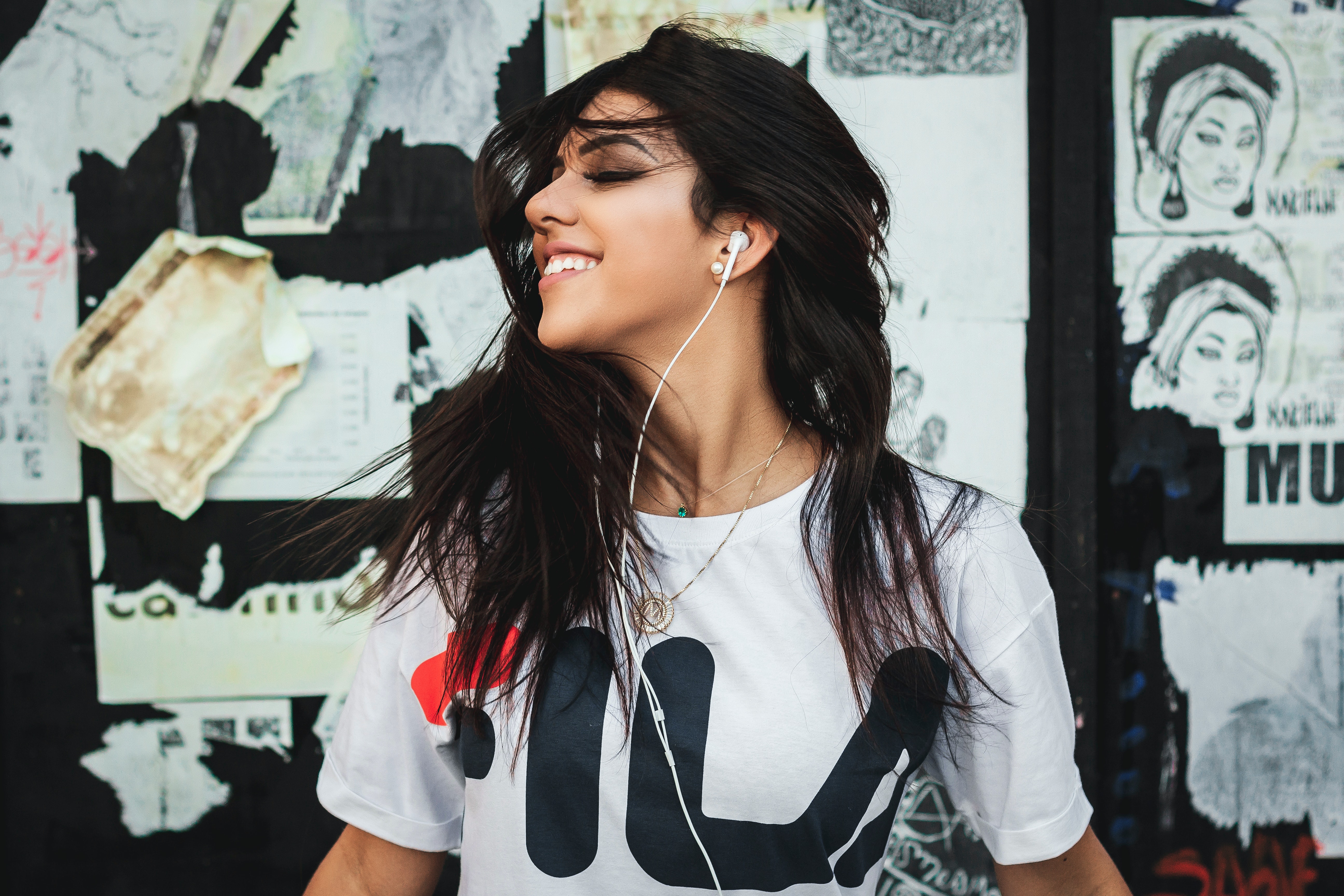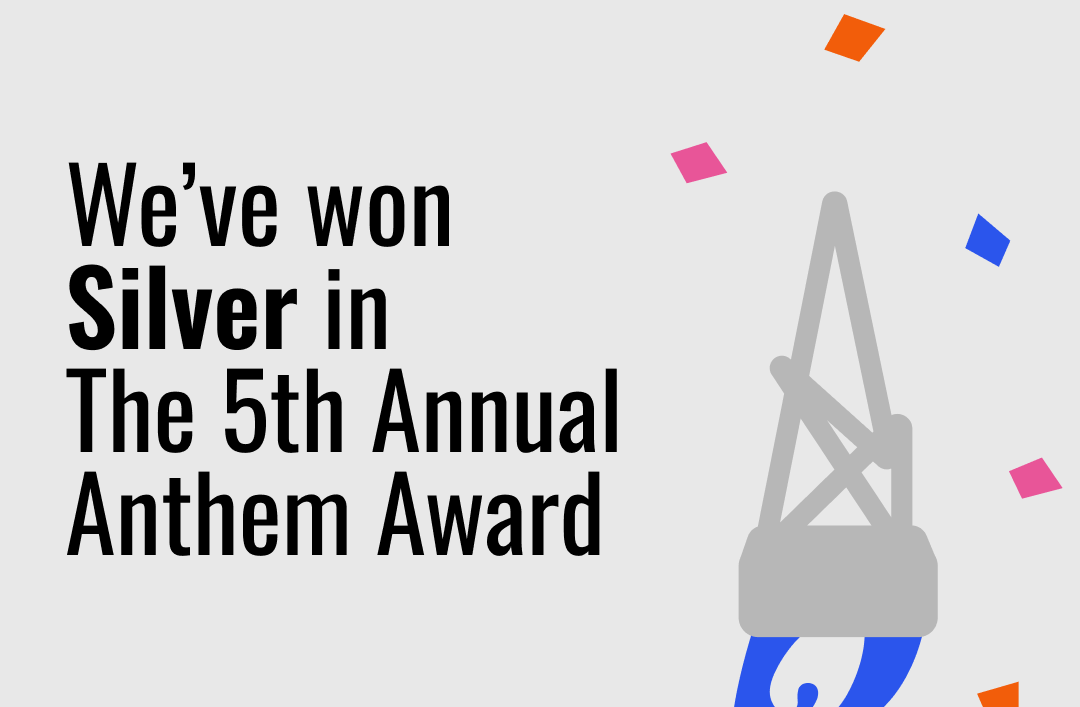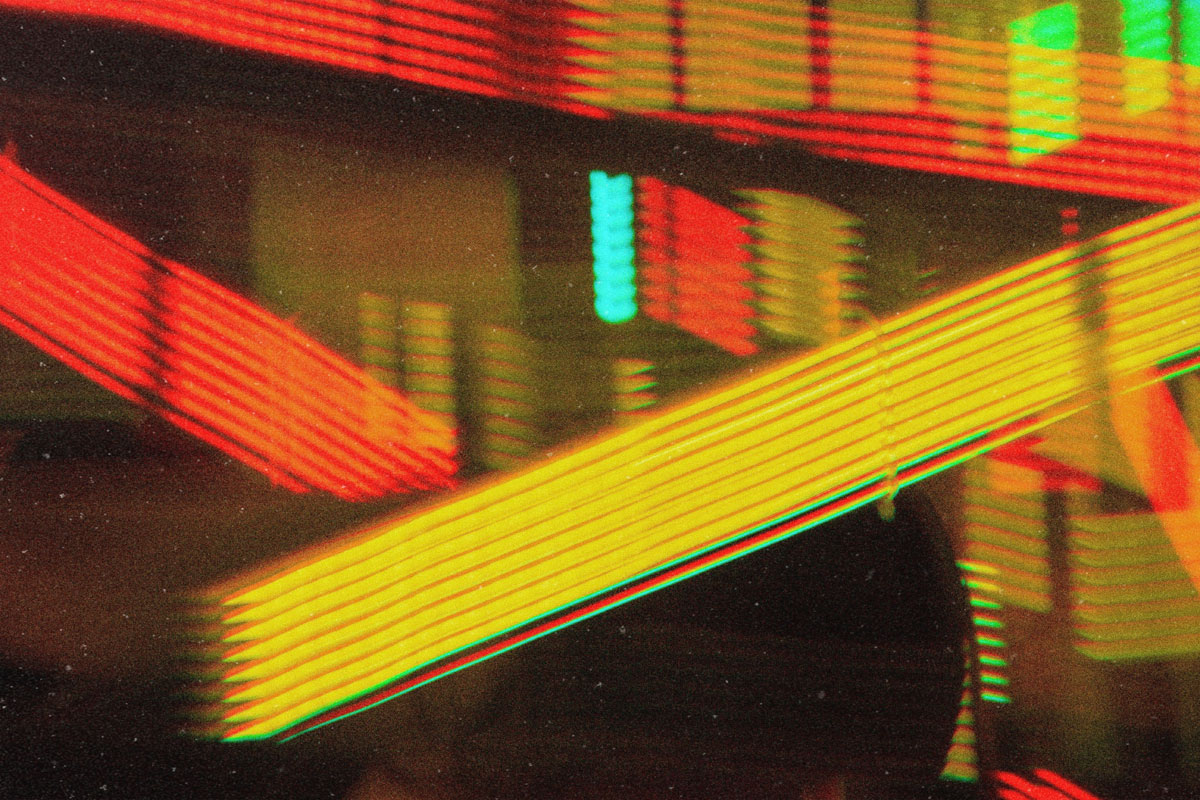Starting a podcast can be a great way to share your organization’s message with the exploding number of people who listen to audio content on a regular basis. Having a podcast gives a brand its own platform to share important updates, highlight new ideas, and host intriguing conversations—making it a great way to communicate with your audience.
So…how do you get one?
While getting a podcast up and running can seem daunting at first, the process is actually a lot simpler than you might think.
In this post, we’ll break podcasting down into simple, manageable steps you can take to get your ideas out of your head—and into your listeners’ ears.
Planning Your Podcast
First things first: who are you making your podcast for?
Knowing Your Audience: Buyer Personas
Knowing your audience inside and out is the first and most important step in creating a podcast.
Before you even think about buying equipment, setting up interviews, or brainstorming ideas for episodes, you’ll want to have a firm understanding of who your target audience is. In other words, you’ll need to develop a buyer persona.
A good buyer persona will include demographic information (age, gender, salary, etc.), psychographic information (values, personality traits, etc.), notes on goals and challenges your audience faces (organizational and personal), and a list of reasons why an audience member might choose your organization over a competitor’s. This information should be written down, and kept in a place where the rest of your team can easily access it.
(Don’t have a buyer persona already? Not a problem! Download our free buyer persona worksheet here.)

Why spend extra time doing all this audience research? Why not dive straight into recording?
Knowing your audience will help you figure out what sort of content they’ll be most interested in hearing, giving your podcast a better shot at success. As you’ll soon find out, there’s a wide variety of options to choose from when it comes to show format, episode length, music production, and sound design—and that’s not even taking into account which topics you’d like to cover on your show!
Taking the time to get a good grip on your audience early in the process will save a lot of effort later on. By knowing what your audience is likely to enjoy, you can cut out options that probably won’t interest them, and focus on the creative choices that will make your show a hit with the people who matter most to your organization.
Does your brand seek to entertain? If so, research-heavy, in-depth interviews with subject matter experts may not be the best approach for your audience. By the same token, if you’re creating a podcast for a bank, NGO, or museum, an AM-shock-jock vibe probably won’t serve your audience very well.
Taking the needs and preferences of your audience into account as soon as possible during the planning process will help you pinpoint a show format they’ll love.
Speaking of which…
Format and Tone
Once you have a solid idea of who you’d like to listen to your podcast, you’re ready to start building a show around their particular interests. Start by thinking about how you’d like to approach the following:
Format
Will your podcast be scripted, or unscripted? Will your show offer casual conversations between peers, structured interviews with industry experts, or well-researched analyses a particular topic? Will your show be episodic, or will you write out story arcs that span entire seasons?
Length
How long will each of your episodes be? Will you share five-minute snippets of up-to-the-minute news and relevant information? Or will your episodes feature deep discussions lasting two or even three hours? Something in between?
Release Schedule
How often will new episodes drop? Will you record and release an episode per week, with minimal edits? Or will you bundle a small number of episodes into seasons, with only a few releases planned each year?
Tone
Will your audience like a podcast that is funny? Inspirational? Serious? Is the show’s main purpose to entertain, or inform?
When answering these questions, think about what kind of information your audience might want, and how they’d prefer to receive it.
Are they in a rush, and in need of useful tips and tricks? If so, they might prefer something short and snappy. Are they more philosophically minded, and eager to learn about the root causes of things? Longer episodes with fuller explanations and more luxurious sound design might be the way to go. Use what you know about your audience and your own brand to find the right approach.
Preparing to Record
By now, you know who you are creating a podcast for, and what you’d like to tell them. Now’s the time to sit down and get ready for the big day when you hit Record for the first time.
Research and Outlining
While there are exceptions, most podcast formats will require you to do at least a bit of research into your chosen topic for each episode.
Documentary shows can spend months or even years compiling information about a crime, a historical event, a scientific breakthrough, and so on. On the other hand, unscripted conversational podcasts may only need to riff on a handful of relevant facts or news, meaning their research process will be much shorter.
Whatever format you’ve chosen, it can be helpful to gather enough material to carry you through an episode, and lay out your notes in a way that is helpful to you as you get ready to record. That could mean a detailed outline in a multi-page document, or something as simple as a few bullet points on a post-it note.

If you’ve decided to interview guests, consider writing out a list of high-level questions in advance—but be prepared to go off-script if you make an interesting discovery during the interview!
In any case, spend some time getting familiar with the topic you’ll be discussing, and be sure to jot down any key ideas you’d like to share with your audience.
Outreach
If you’ve decided to run an interview-based podcast, you’ll also have to find and schedule guests to join you on your show.
Don’t be discouraged if this turns out to be harder than you thought! Taking an hour or more to record a podcast episode is a pretty big ask, especially when a podcast is new and unproven.
Approach the guest-hunting process like you would any other outreach effort—put together a much larger list of potential interviewees than you think you’ll need, add them to your CRM, and reach out consistently and politely until you’ve secured a time and date.
Now, for the fun part…
Recording
Equipment
While high-end recording equipment can cost many thousands of dollars, there’s no need to break the bank when you’re first starting out! A simple USB microphone—used correctly in a good recording environment—will capture clean audio for your first few batches of episodes. You can always upgrade to more robust equipment later on.

Recording interviews remotely? Then you’ll also need a way to capture audio from phone calls or video calls. Again, while there are many dedicated podcast-recording solutions out there, it may be best to start small with tools you already have. If you’re familiar with Zoom, for instance, try recording interviews there first, before using time and resources to learn a new platform.
Recording Episodes
Remember those notes you wrote down earlier? Now’s the time to use them!
While recording yourself or your guest, use your notes or interview questions to provide some structure to the allotted time—while still leaving room for spontaneity and surprises.
When podcast hosts and their guests sound natural in their recordings, they create a feeling of intimacy with their listeners that is hard to replicate with any other kind of content. Take advantage of this by giving yourself prompts, rather than scripting out everything you plan to say in advance. Believe it or not, small mistakes and pauses can make your recording sound much more authentic.
And speaking of mistakes: don’t be afraid to make as many as you want on recording day! You and your guests can flub your words, rephrase ideas, or even abandon entire threads of conversation in order to explore more interesting topics. You’ll be able to tweak and polish as much as you need to during the editing process.
Editing, Music, and Sound Design
So, you’ve got a great raw recording of your first story or interview. How do you take that unfinished audio and turn it into a standout podcast episode?
Editing
First and foremost, you’ll want to edit your raw audio file to remove anything you don’t want in the final episode.
To do that, you’ll need to use an editing software that will allow you to cut out and adjust pieces of your recording until you get the sound you want. If you are just getting started with podcasting, try using Audacity or another free software before looking around for paid solutions.
During a first round of edits, things typically on the chopping block include:
- Mistakes or flubs that break the flow of the listening experience. For instance, while the occasional “um” or “eh” is probably fine to keep, the sound of you or your guest getting completely tongue-tied or choking on your coffee is probably worth cutting out.
- Distracting sounds like cars driving by outside your window, appliances near your recording environment turning on or off, and excessive mouth noises.
- Any parts of your story or conversation that don’t make the final cut. For example, you may realize during the editing process that you have 30 minutes of highly engaging material from your interview subject, and 10 minutes of answers that are only so-so. In this scenario, it’s a good idea to trim out the less compelling parts. Doing so will make your episode better for your listeners, and will make your guest sound great!
Beyond these basic edits, you can get as simple or as complex as you like. Some podcasters prefer to keep a raw sound in their recordings, leaving pauses and small imperfections in their episodes. Others aim for an extremely professional sound, spending lots of time to remove any rough sections of audio.
Your decisions around how much to polish your final product should be based on both your audience’s needs and your own time and resources. For instance, you may want to produce audiobook-level recordings every time you release an episode—but if you only have a few hours a week to work on your podcast, it might be better to release rougher recordings in order to keep a consistent release schedule.
Music and Sound Design
Depending on the format you’ve chosen, adding music and sound effects to your episodes can be a great way to kick the quality of your podcast up a notch, and create a unique listening experience for your audience.
Podcasts in most formats will benefit from dedicated intro/outro music—a short snippet of music at the beginning and end of each episode that listeners will come to associate with your brand. Introducing your content with a royalty-free song is a great way to invite listeners into each episode, and signal when it is wrapping up.

Meanwhile, sound effects can add color and texture to podcasts that rely on storytelling. Ambient noises—city traffic, the bustle of a crowded café, waves on the beach, and so on—can help set the scene for your listeners, and immerse them more fully in the stories you’re trying to tell. Meanwhile, more specific sounds can punctuate key moments in your story, making them stand out in your audience’s memory.
Whether you are sharing a brief story as part of a cold open, or hosting a podcast completely dedicated to storytelling, using royalty-free sound effects sparingly throughout your episodes will lend them an extra sense of professionalism and polish.
Sharing Your Podcast
Planning: check. Recording: check. Editing: check.
You’ve put in a lot of work to produce a podcast episode that your audience will love. Now’s the time to get that content out into the world so they can enjoy it.
Hosting
Getting a podcast online is a bit more complicated than publishing a new blog post, or sharing a social media update. This is because, unlike many other types of content, podcast episodes should not be uploaded directly to your organization’s website.
Why not? Because podcast files tend to be pretty big—and having large numbers of people download big files directly from your website can cause major performance issues, slowing down your website and creating a frustrating user experience.
Rather than host those files yourself, it’s better in the long run to use a podcast hosting service.
Podcast hosting solutions come in all shapes and sizes. Some are free or cheap options for bootstrapping podcasters who don’t want too many bells and whistles, and are willing to put in a bit of extra work to keep their podcast running. Others are expensive enterprise-level solutions packed with analytics tools and other useful features.
Again, while you’re still experimenting with podcasting, it’s fine to start with a lower-tier option. If you and your organization discover that you need more features in the future, you can always upgrade.
Publishing Your Podcast
You’ve finished your podcast, uploaded it to your hosting provider’s website, and hit Publish. Your podcast is live—on your hosting platform. How do you get it to show up in the places where people actually listen to podcasts?

Platforms like Apple Podcasts, Spotify, Stitcher, and so on are directories—apps where people can search for, save, and listen to podcast episodes. Getting your podcast onto as many directories as possible will allow you to reach listeners regardless of the devices or services they use to get their audio.
So how do you get your podcast onto a directory? Technically, you’ll need to submit your show’s RSS feed to each directory where you’d like your podcast to appear. This will allow the platforms to receive your episodes as they are released, and make them available for users.
Thankfully, you may not need to do this for each directory individually! That’s because most hosting providers now give users the ability to submit their podcast to many directories at once via their own dashboards. Your hosting provider may also offer updates about the status of your submission with each directory.
Once you’ve submitted your RSS feed, your podcast may go through a short approval process to make sure your content is in line with the directory’s policies. When that’s done, your podcast will be made available on the platform for anyone who wants to listen to it.
Bask in Audio Glory
Congratulations! You’ve turned your great idea into a compelling podcast your audience will want to tune into again and again.
Now, your target audiences can listen to the important things your organization has to say—and you can listen to the even more important things they have to say.
Use the feedback you gather from comments, listening habits, direct messages, and other channels to continuously improve your podcast over time, giving your listeners more of what they need and less of what they don’t. You may even find that your podcast sparks interesting conversations about ways that your organization can better serve the people it is trying to reach.
Keep your ears open—and enjoy the ability to connect with your audience in a whole new way.
Here at Free Range, we love making podcasts. We've even got one of our own.
If you have an idea for a podcast that you’d like to talk about, please get in touch with us! We’d be thrilled to help you bring it to life.


-1.png)

